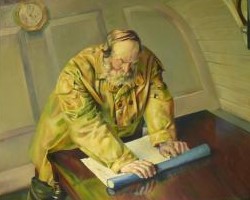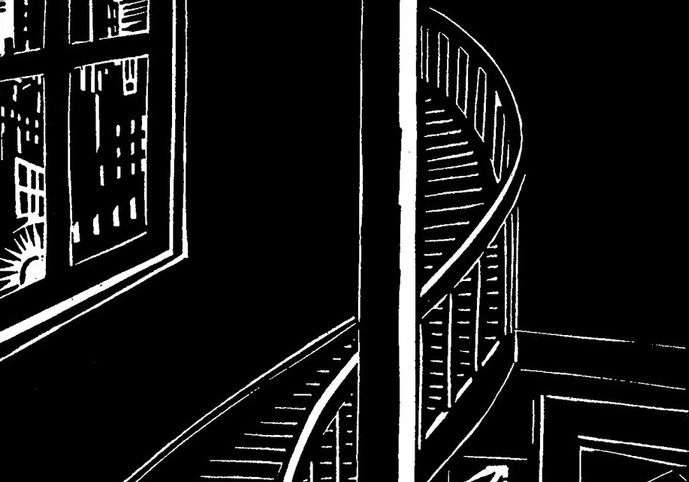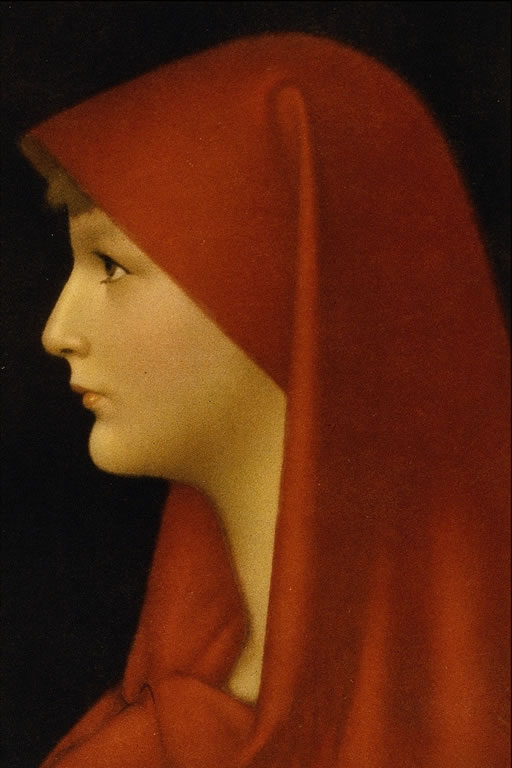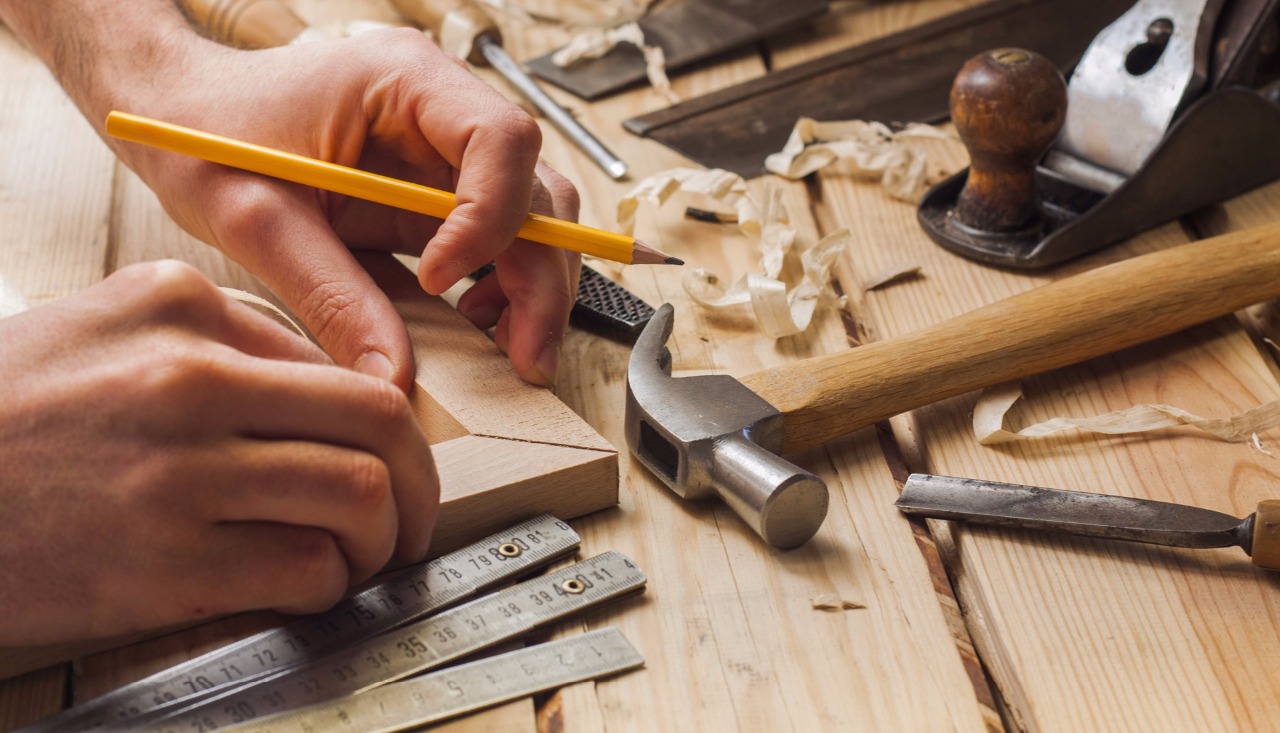MY MEMORY PALACE: Two grandfathers
Lindevägen 26, Enskede. I have always found it hard to remember numbers, but after more than forty-five years I am still able to recall the address of my grandparents' home, which they named Tallebo, Home of the Pine Trees. Now the place must be completely different from the memory palace I have preserved in my mind.
Facing the street was a red-painted fence overgrown by Virginia creeper, and with a white gate, vaulted by an arch, thick with leaves. A recently raked path ran along the gable and, of course, the sun was always shining and the air filled with the fragrance of flowers, leaves and earth. Scents linger in the memory, but unlike sight and sound they cannot be reproduced by our mind.

To the right rouse a mighty lime-tree with rich foliage and below it a lawn ran along the path, in its middle was a flowerbed with multi-coloured snap-dragons, gladioli, hyacinths, lupines and peonies. To the left rose the creeper covered, whitewashed façade, which in my childhood appeared to be very high. Around the corner a short flight of stairs led to a pair of double doors, which opened onto a porch with large windows and a rich variety of potted plants.
On the wall next to the door hung my uncle Gunnar´s copy of Charles XII´s funeral procession and a small reproduction of Christan Krogh's painting of a sea captain, who during rough seas, with a bushy beard and a heavy oilskin coat is leaning over a chart in a whitewashed cabin. My grandfather was fascinated by the sea after his father, Severin Caspersson, had been a skipper in the coastal town of Varberg. He had owned several big sailing ships, though never at the same time. I believe that at least two of his ships were wrecked and sank. As a child, I erroneously assumed that the picture depicted him. If I remember correctly my grandfather told me that his father sailed on the Baltic countries and with tar and timber supports for the mines around Newcastle, from where I guess they brought back coke.

In the flower-scented anteroom Grandpa showed me how you could gently pull the leaves of the lemon balm between your fingers to have the fresh scent of lemon linger on them. His mother, Hannah, who my mother remembered as a very strict and religious lady of small stature, had called the lemon balm Heart´s Delight, since the plant was said to have a tonic effect on the heart and was used as a remedy for melancholy.
- Melancholia?
- It is when you are so sad and gloomy that it poisons your entire body. Everything becomes dark and black around you.
Grandpa, who had been a teacher, explained many things to me. He often demonstrated what he was talking about. That was perhaps why so much of what he said remained in my memory. In that way Grandpa reminds me of my father. He was also a great storyteller who willingly and often told me about and showed me strange things.


There were, of course, the peculiar snap-dragons in Grandpa's garden, if you pulled the lower lip from their petals they opened up like a lion´s jaws and bared their intensely yellow interior. Or the monkshood´s blue flower, the top of which looks like a hood, or round helmet, and most children know the secret it is hiding and that it is revealed if you gently pull away the hood and the stamens appear as two horses, which with their delicate stems pull behind them the cupped petals, like the fairy carriage of Cinderella. Grandpa could, filled as his mind was with ancient tales, disclose that the entire monkshood plant was crammed with deadly poison. When drops of froth fell from the hell dog Cerberus and entered the ground below him, they were transformed into monkshood flowers from which the sorceress Medea extracted the poison she used when she in vain tried to kill her stepson Theseus. Grandpa opened up a monkshood flower and explained:
- See how the horses run forward, just as the winged dragons that Medea hitched in front of her carriage, before she fled through the air after her attempted assassination of Theseus. While she flew from Athens to the Aryans´ pastures deep inside Persia, she brought with her Medes, her son, who finally became king and his minions were named Medes after him.
It was often like that with the information Grandpa bestowed upon me. When he told me a story it could turn out to be like a Russian doll, containing ever more stories within itself, leading to more questions. So could for example the opening of the monkshood´s flower bring Grandpa to Medea's horrifying tale about the poisoning of enemies and kin, dismemberment of her brothers, and finally the senseless murder of her own children, only because her husband had abandoned her. Grandpa's opening of a small flower also brought us to flying dragons and distant countries like Persia, where Scheherazade had learned her thousand tales. Stories I later found and could expand by leafing through Grandpa's many, thrilling books. A fantasy world that also transformed his garden, which rose along the "Mountain" behind his house, into an Eldorado where each flower hid a story.
For sure Grandpa had told similar stories to my uncle Gunnar, who behind the attic had a small room where he entered and created dream worlds of his own. Up there wooden boxes contained thousands of small, meticulously painted cardboard figures that could be made standing by olding flaps at their feet. Uncle Gunnar had made the whole army of Charles XII; footmen, horsemen, cannons and hawser wagons. He had also recreated the Arabian Nights with its sultans, harem ladies, evil wizards, princes, elephants, camels and palaces. I and my cousin Erik Gustaf could spend hours up there on the dusty, murky wind, playing with the figurines his father had drawn, painted and cut out as a child. I wonder where all this ended up, it is probable that all those men, horses, animals and places only remain in my, my sister´s and my cousins' memories.

From the anteroom I entered a spacious hall, with a staircase, which in an exciting angle swung up to the second floor. I was fascinated by how the steps on one side narrowed as they turned to the second floor, which they met between two dark brown painted balustrades that I used to climb on while looking down towards the first floor, imagining I was climbing a high mountain. The stairs, where the edge of each step was protected by a shiny brass strip, could easily turn into mountains, ship masts or castle stairs where pirates, musketeers or knights were fencing as Errol Flynn and similar heroes did in the matinee movies.
To a wall next to the stairs a phone was placed on a shelf, under which hang a cardboard with important phone numbers. Despite my bad numeric memory I can still recall the phone number, because at that time you responded with numbers instead of name - 49 07 05. There was a chair under the phone, but we preferred to sit on the stairs while talking in the phone. I also sat on the stairs when I was alone during a dark evening when my cousins, my father and mother, and grandparents had gone to see Windjammer, a movie about a Norwegian sailing ship. I was five years old and it was the first time I had been alone. Apparently, I had slept so deep that they had left me without daring to wake me. I have always found it easy to sleep and seldom wake up during night. Nevertheless, this time I woke up, in the big, empty house and could not understand where all the people had gone. I sat on the stairs waiting for them while the moonlight fell in through the window that was placed on the wall by the staircase.

At that time my grandmother was still alive, a beautiful, fair-haired lady who was very similar to my mother, but I unfortunately do not have so many memories of her, apart from her friendly smile and her last painful hospitalization after a stroke. She died when I was six years old, but Grandpa used to tell me that he felt her presence in the house. When I was alone visiting Grandpa, I used to sleep beside him in Grandma's large bed. Once he told me:
- I was sleeping here when I in the middle of the night suddenly woke up and saw light entering under the door, which then slowly opened and Irene came into the room. She came up to the side of my bed, leaned over me and kissed me on the forehead.
That tale scared me and combined with my cousin's stories about Uncle Gunnar seeing angels it did not leave me for a long time, making me reluctant to be alone on the second floor in the evenings.
In the lower stairwell was a cabinet hidden behind a heavy curtain, inside were shoe racks, hats and overcoats. The place was called the Overshoe Shelf since it was on such a rack my mother and her brothers had to sit and be ashamed if they had done some mischief. That cabinet used to be the last refuge when we children played hide and seek, and were unable to find no good hiding place in time. The stairwell hall appeared as both threatening and festive. During my mother's childhood it had in time for the Christmas morning been turned into a fairy grotto. When my mother and her brothers came down from their bedrooms on the second floor, they found that Grandma and Grandpa during the night had hung tapestries with Christmas motifs on the walls and lit candles, when they came into the salon they found the Christmas tree dressed and adorned. It appears as if in those days there were always huge drifts of snow outside the large windows. My mother and father also used the night before Christmas Eve to decorate our apartment, while we children were still asleep, something that made us understand that the Christmas season was quite different from everyday life, that it was a time when magic and warmth to entered our lives and changed everything. Such memories have made it difficult for me to accept that the commercial Christmas starts already in November and that Christmas trees are brought into the house long before Christmas Eve - it destroys the magic.

On the building's ground floor were sliding doors, something I have only seen there and in castles. I guess my handy grandfather had made and installed them all by himself. When you from the hallway entered the living you could to the right see a large crescent-shaped and grey, fireplace. Around the opening for the hearth Grandpa had painted a wide loop with patterns in white and red. On the mantelpiece stood a massive, seven-branched candlestick of wood, along with several wooden figurines, all made by Grandpa. No, not all of them, some figures like an Indian chieftain and a hussar had been carved and painted by my father, who also had made and a nice little clay sculpture of a budgerigar sitting on a stone. Above the fireplace was a bulky, wine-red armchair, also, like the fireplace, also made by Grandpa. On the wall next to the chair was a reproduction of Henner´s Fabiola, which in those days was common in many homes. I wondered who she was and still do not know it.

My grandparents' house was filled with surprising interior design details, usually crafted by Grandpa, and paintings done by Uncle Gunnar. The living room had a casket ceiling made of light wood and dark slats, also crafted by Grandpa, who used to sit in the red armchair and listen to the radio, which was placed behind another armchair and beside a green chaise longue over which hung a mighty oil painting made by Uncle Gunnar and depicting Grandpa within a heavy, grey frame.
My cousin Erik Gustaf once stated that Uncle Gunnar had told him that Grandpa and Grandma in the beginning had been concerned about the voices coming from the radio, these might endanger their minds since the human brain was not made to embrace speech from other people than those present in the room. It was also quite late in time that the TV-set appeared in the house. But the big heavy bookcase, next to an equally massive desk in front of the wide picture window, had always been there. Grandpa often sat by the desk and it happened that he suddenly rushed up from his chair and violently shook shock his fist at the magpies, which stole birds' eggs and scratched around among his beloved flower beds. Once he crushed the great table lamp with its magnificent, marbled shade. Since the garden was laid out on a hillside it seemed to pile up outside the window and your gaze was met by a sea of flowers, which like a mighty ground swell, rose up in front of knotty pine crowns and a blue sky.

On the right side beside the desk was a burly piano with a remarkable piano bench, made from beautifully speckled light wood and equipped with small doors, behind which the notes were kept. Even that strange piece of furniture had been made by Grandpa. Grandma, her daughter and two sons were all good pianists. The children went to the same piano teacher in the centre of Stockholm. Mother hated to go there since she did not knew her homework perfectly and the piano teacher used to hit her hard on the fingers. Eventually Mother, just like Uncle Gunnar, became quite good at piano playing and could sensitively perform sonatas by Beethoven, Schubert and Schumann, while Uncle Sven excelled by playing Alexander's Ragtime Band at a neck breaking speed. Beside the piano hung a painting that I was deeply fascinated by, it was a woodcut made by Uncle Gunnar and depicted the eagle Gorgo from the tale The Wonderful Adventures of Nils.
There were not so many flowers inside the house, except in the bright dining room where Grandpa had placed a large self-made table, with heavy seats fitted with carved monograms. In the dining room ticked a large wall clock from Grandpa's childhood home, a sound I've never been fond of because I associate it with death and old age. A service walkway with cupboards filled with crockery and glass led into the kitchen. At the bottom shelf of one of the cabinets Grandpa stored wine and schnapps. It was not often he drank, but it happened that he took a shot for the heart's sake. Next to the kitchen was a small dining room, formerly a maid's chamber. It was there we ate most of the time. I remember Grandpa´s large appetite, how he with special pleasure gobbled down what he called "trousers", i.e. spawn sacks from Codfish.
The kitchen was bright and spacious, there was a large pantry you could walk into. Between thick-painted wooden walls it smelled delightfully of coffee and vegetables. If you continue through the kitchen you reached a wooden door with a large key and if you opened it you ended up in a steep staircase, leading down into another one of the house´s enchanted spaces – Grandpa´s carpentry basement. Down there, in a windowless room, with grey cement walls, smelling of shavings and varnish Grandpa had his huge workbench where he made his remarkable creations, including a large farmhouse with several floors, with living space for the farmer´s family and a stable for cows and horses, there was also outbuildings and a trolley shed where the carts also were made by Grandpa. I was given this fantastic farm for one of my birthdays and I still keep it.

Down in his basement Grandpa also had a toilet with a wooden door, inside it I could sit and watch Grandpa while he planed, nailed and painted at his workbench. On the wooden door he had pasted newspaper clippings, including political cartoons of the witty draftsman EWK. Next to the toilet was a large wooden box with coke, which Grandpa used to fire the boiler in the laundry room next door, where there was also a wood clad boiler for hot water and large stone vats.
From Grandpa´s carpentry basement you reached the garden through a room with a potato bin and a wall with pantries for food that would not be used at once. On the walls hung bass strings that Grandpa used to tie up plants and flowers. The garden tools he kept in a garage down by the building's rear gates. Grandma and Grandpa had no car. A steep staircase led up to an arbour, covered with Virginia Creeper, to its right was the lush garden, while you to the left could follow a narrow path, with irregular laid stones between which houseleek and other stonecrop grew. On a roughly hewn pedestal Grandpa had placed a sundial.
.jpg)
Above the floral exuberance lay the naked rock where I could lie on my back, enjoying the sunshine, there were also white garden furniture under a sturdy birch-tree. From there you looked down at a sea of flowers spreading out towards the house and its porch above the broad picture windows. From that porch I had, dressed in a soft, light blue pyjamas, with my parents and grandparents, in the autumn of 1957 seen how the Russian Sputnik as a bright, tiny spot slowly moved across the starry night sky. The satellite was not much bigger than a beach ball, but I'm convinced that I saw it as a tiny white dot moving across the sky. I was three years old and it is one of my first memories.

Grandfather was a master at combining flowers and plants in such a way that they formed a harmonized abundance of colours, a kind of alluring chaos that could keep your gaze transfixed for hours, especially as bees and other insects moved among plants. In Grandpa's home there was a combination of external and internal worlds; Uncle Gunnar´s toy soldiers, Grandpa´s carpentry, the garden, the books, but also an inner world created by my interchange with Grandpa, among all these books and flowers. I lay in his bed listening to him while he read aloud stories from the Bible or the Iliad, how he sang hymns, like the powerful:
Spread your mighty wings,
O Jesus, over me
and let me quietly rest
in weal and woe with you.

or quoted poems from memory, like those of the now quite outdated Swedish poets Topelius and Snoilsky. Such moments have remained with me. Especially how Grandpa recounted Snoilsky´s poem about how the mysterious Emanuel Swedenborg was asked by a little girl if he could show her one of those angels he was known to be familiar with. The old seer then took her through his garden, “along strawberry patches and under a canopy of honeysuckle”, until they arrived at his gazebo, which still can be seen at the outdoor museum of Skansen in Stockholm, where he picked up the little girl and through a window showed her the angel she wanted to meet. The small girl marvelled at the sight: "What can it be? She sees a child's face" but she laughs and lights up: "Oh, the window is just a mirror!"
I asked Grandpa who Swedenborg had been and he explained that he was a man who lived in Stockholm during the 18th century, claiming to be able to visit heaven and hell, trips he described in book after book. Grandpa's story created a lifelong interest in Swedenborg, I have written about him and even visited the great Swedenborg connoisseur and pastor of the New Church that Swedenborg founded, Olle Hjern, but that is quite another story that I might come back to sometime in the future.

Here in Rome, I have occasionally visited the room in Palazzo Corsini where the remarkable Queen Christina of Sweden died in 1689, and where I have read her proud words inscribed on a marble slab: "I was born free, lived free and will die liberated". In that room I have remembered how Grandpa in a voice trembling with emotion quoted the final words of another Snoilsky poem. It tells how a poor Swedish student sits beneath the Palazzo Corsini, then called Villa Riario, singing a Swedish folksong, which the dying Kristina listens to through the open windows:
The red robed priests whisper
Touching a hand gone cold.
Followed by Swedish song, Kristina Alexandra
Crossed the bridge to unknown realms.
The Swedish rhyme is quite exquisite and sorry to say I have been, after trying hard, unable to transfer it into English.
Now - you may ask why I have chosen to re-visit my grandparents´ house. The explanation is partly to be found in two books by Frances Yates Giordano Bruno and the Hermitic Tradition and The Art of Memory where she describes a method used to enhance the memory, called the Loci Method, from the Roman word loci, which means "place". Searching for different memorizing methods was popular both in Antiquity and during the Renaissance, when books were expensive and rare, something that made memory training important for philosophers and writers.
The loci technique means that you imagine a building and its different rooms, which you furnish with objects that evoke associations to specific topics and memories. Then you may wander through your mental "memory palace" and pick out objects and sights that activate your memory and stimulate associations. What you then make use of is your eidetic memory (from the Greek εἶδος, eidos "to be seen"), i.e. your ability to activate visual recollections, an ability that apparently is highly developed in children, but weakens with age. Eidetic ability is obviously linked to primitive brain functions and appear to be developed in most mammals. The hippocampus is the brain's centre for eidetic processes and it is also where fantasies and dreams take shape.

With that in mind I walked through my grandparents' house, trying to evoke memories of my grandfather, revisiting the great importance he had for me. My reason for doing so is the fact that I a fortnight ago became grandfather myself, of an extraordinarily beautiful little girl named Liv and if I to her could become the great role model and inspiration that my grandfather was for me, then I would be a very happy man.

Yates, Frances A. (1999) Giordano Bruno and the Hermetic Tradition. New York: Routledge. Yates, Frances A. (2001) The Art of Memory. Chicago: The University of Chicago Press.





